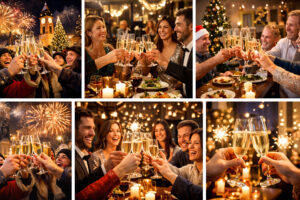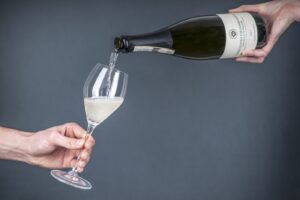At first glance, Richard Parsons, seated at one of the tables in the historic ‘Fiaschetteria’ of Montalcino, appears to be just another one of the countless tourists who pass through the capital of Brunello, enamored with Tuscany as most are.
Instead, this tall and smiling sixty-year-old African-American, who is casually dressed in jeans and a baseball cap, is one of the most potent and feared managers in the world. Parsons is Chairman and Ceo of Aol Time Warner, the American media giant, controlled by Warner Bros, Hbo, Cnn, Time Inc., New Line Cinema, and Aol.
And he chose Montalcino as the location to buy property. Together with his friend and associate, the Swiss manager Mario Bollag, they acquired Il Palazzone, an estate that includes 3 hectares of vineyards producing 4,000 bottles per year.
Parsons does not take too kindly to journalists and the media (professional saturation?), but during his latest trip to Italy he conceded a single interview to WineNews, for an exclusive opportunity to meet and chat about wine and other topics.
It is interesting to think that a businessman from New York, who has the financial possibilities to invest in properties in the most famous wine territories in the world (from France to California, South Africa and Australia) would choose as his “getaway” a little known estate, in a distant corner of Tuscany.
Why exactly Montalcino, Mr. Parsons?
“In the first place because I really love Italy: the people, the food, and naturally the wine. Tuscany is also one of the most beautiful places in the world: if you ask almost anyone where they would like to live, 90% would answer Tuscany. Upon arriving here I began my search to acquire an estate starting from Lucca, then i passed to Florence, and the Chianti, arriving finally in Montalcino. And here is where I finally found what I was looking for.
What relationship do you have with wine?
“I love it, and my favorite wines in absolute are Italian reds. And among these, my favorite is Brunello. That’s why I bought this estate in Montalcino with the motto “We drink all we can and then sell the rest!” I began to get to know and appreciate wine thanks to the teachings of an exceptional maestro who I worked for, Nelson Rockefeller. He, who was also obviously my professional mentor, loved French wines in particular, above all Bordeaux. I, on the other hand, prefer Italian wines, also because I think French wines are too expensive. Of course, Rockefeller didn’t have problems with the price”.
And what wines do you have in your personal cellar in New York?
“Many Italians: besides Brunello I adore Super Tuscans, above all Sassicaia and Solaia, which I consider exceptional. But I also appreciate Chianti Classico and Cannonau di Sardegna, while my wife Laura loves, above all, Amarone. Among American wines I prefer Cabernet”.
When in the United States, do you miss the Tuscan countryside?
“Absolutely. For someone like me, who lives and works in the chaos of New York, spending a few days immersed in silence, surrounded by these splendid hills, it is a dream. I come to Montalcino at least once a year, and always for the grape harvest, which I follow personally. It really relaxes me”.
We know that a part of your wine goes to friends. Can you tell us which famous personalities you’ve given your wine to?
“Among the many who I could name are Quincy Jones, Bono of U2, Naomi Campbell, Vice President Dick Cheney, as well as many members of Congress in Washington. I have to say that all of them have appreciated it. In Italy I have given it to Silvio Berlusconi and stylist Massimo Ferragamo. And to think that at a dinner with top managers and friends of mine, where a wine tasting is organized each year and top labels from Cheval Blanc to Chateau Petrus are compared, my Brunello Riserva 1999 Il Palazzone was the unanimous top choice. A great satisfaction”.
Do you think there is a limit, even mental, to the price of wines?
“No, I don’t think so. Wine is like art, it is a market that makes the prices, which sometimes reach stratospheric levels. And, like art, wine is also considered by many an object to collect. I, instead, prefer to drink it”.
You are an expert in communications: through your group you manage television, cinema, publishing, music, internet. In your opinion, what image does Italian wine have in the rest of the world?
“I think Italian wine is still passing through a transitional phase: in the 1970’s its image was connected to quantity more than quality, wine in jugs was still being bought. In the 80’s and 90’s the expansion phase began, thanks in part to the notoriety of some names like Brunello, Barolo, and Barbaresco - not forgetting the most famous Super Tuscans - that contributed to raising and further promoting the image of Italian wines around the world. Now, however, it is very important to get it better known in other countries, even the lesser known labels, and in particular in the United States, which is one of the main markets of reference for Italian wines. In fact, nobody in America has the slightest idea what Sicilian or Pugliese wines are. And yet in these regions excellent wines are produced. So, I think Italian wine must aim towards getting its less famous wines known as well as those that are already universally known”.
And, according to you, what are the best tools to use and actions to be taken to promote wine in the U.S.?
“Italians must understand that the American market is divided into two levels: the premium market; the high end in which Italians compete with the French, and the mass market; the lower end in which Italians have very aggressive competitors like the Australians and Americans. On the high end market Italians are moving very well, thanks in part to the success of Italian style in the U.S.: food, fashion, and design. Image is very important for this target, the presence on wine lists in the best Italian restaurants (which are very trendy right now), the use of famous personalities who drink certain labels also creates automatic publicity. Americans, in fact, follow closely the trends launched by celebrities. In regards to this segment I am very optimistic, I think that Italians can easily beat the French. Instead, on the lower level market, the question gets complicated. Here the price factor counts, but above all the brand promotion. In recent years the Australians are doing huge publicity campaigns. I cite the example of the Yellow Tail label, which invests more in communications alone than all Italian wine companies put together. In this segment it is fundamental to move with publicity in magazines and television and above all with direct action towards consumers, billboards and brochures, as well as promotion in supermarkets. From this point of view Italy is completely absent. The only example that I have seen of an excellent publicity campaign has been by Santa Margherita, which on this market is fairly well known in the U.S.”
You must keep in mind that the average Italian company is very small and, therefore, it does not have the economic resources for such great investments.
“Then the small producers must join forces and make mass: there is no other way to conquer a market that is as big as that of the U.S. Here the consumer has a myriad of choices available and he must be guided. As I have already said the only path is to aim towards lesser known and less expensive Italian labels and regions. If I say Bordeaux in the United States everyone knows what I’m talking about, even if they don’t know a single company. If, instead, I speak of wines from Puglia no one has any idea what they are. Getting them known with a targeted campaign, it simplifies and orients the choices of consumers”.
What do you think of emerging countries like China?
“I think that at both a consumer level, and a production level, it still needs time. Only in the big cities like Shanghai are they beginning to drink wine, while in the rest of the country no one knows what it is. Obviously it is important to slowly start educating them on taste and get certain labels known, but it will take many years before China can be considered a market of reference”.
Are there new projects in sight for your estate?
“Yes, in February 2007 we will launch a new wine, a big Super Tuscan, which has been created through a collaboration between Il Palazzone and Tenuta Terra al Sole, with my friend and associate Mario Bollag. It will be a Cabernet Franc and Sangiovese variety called “Lorenzo e Isabella”, after the names of my parents. 13,000 bottles will be produced, half destined for the United States and half for the European market.
And we are ready to bet that this latest endeavor by “Mr. Time Warner” will soon end up in the wine glasses of vip’s.
Copyright © 2000/2026
Contatti: info@winenews.it
Seguici anche su Twitter: @WineNewsIt
Seguici anche su Facebook: @winenewsit
Questo articolo è tratto dall'archivio di WineNews - Tutti i diritti riservati - Copyright © 2000/2026








































































































































































































